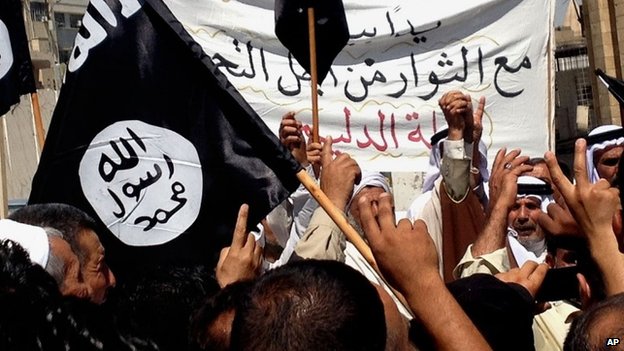When a wanna-be Saudi Arabian suicide bomber flew in to Kuwait to carry out one of the worst militant attacks on innocent and disarmed civiliants, sympathisers to the Islamic State had made preparations such that a driver and car to pick him up and take him to the designated target, Kuwaiti-styled robes, a bomb vest, a safe house to stay and prepare, were all waiting for him. As per a security source, the Islamic State appears to now have a network of sympathisers, militants and propagandists, on the Arab peninsula.
The Kuwaiti media and a security source have reported that Fahd Suliman Abdul-Muhsen al-Qabaa got in touch with a family member who had ties with the Islamic State. He also got in touch with others who were previously linked to Al Qaeda in Kuwait.
As per CCTV camera footage, the young suicide bomber, was recorded entering the Imam al-Sadeq mosque. His figure, in the CCTV recordings, appeared bloated since he was wearing a vest fitted with bombs. The Imam al-Sadeq mosque was then housing around 2,000 Shi’ite men all prostrated in prayer. The suicide bomber examined the praying men then detonated the bomb.
The timing of his entry into the mosque was such that few were in a position to ask any intrusive questions. The attention to detail looks to be pretty high for the team that coordinated and facilitated this attack.
This dastardly act killed 27 worshippers and is one of the deadliest and lethal militant attacks that Kuwait has witnessed since the bombings in Riyadh that killed 35 people, at the start of an Al Qaeda campaign, way back in May 2003.
This attack has raised important questions about the number of Saudi men will to travel and attack Shi’ites in other Gulf Arab States and make good on a threat proclaimed by the Islamic State wherein they had proclaimed that violence will increase during the holy month of Ramadan.
This is a cause for worry for officials since other suicide bombers could follow this model wherein young men radicalised by Islamists fly to neighbouring states without prior visa, since Gulf Arab states allow free travel between between themselves, contact local militant cells and work in a coordinated manner.
References:
http://www.reuters.com/article/2015/07/01/us-kuwait-blast-plot-insight-idUSKCN0PB55420150701
The Kuwaiti media and a security source have reported that Fahd Suliman Abdul-Muhsen al-Qabaa got in touch with a family member who had ties with the Islamic State. He also got in touch with others who were previously linked to Al Qaeda in Kuwait.
As per CCTV camera footage, the young suicide bomber, was recorded entering the Imam al-Sadeq mosque. His figure, in the CCTV recordings, appeared bloated since he was wearing a vest fitted with bombs. The Imam al-Sadeq mosque was then housing around 2,000 Shi’ite men all prostrated in prayer. The suicide bomber examined the praying men then detonated the bomb.
The timing of his entry into the mosque was such that few were in a position to ask any intrusive questions. The attention to detail looks to be pretty high for the team that coordinated and facilitated this attack.
This dastardly act killed 27 worshippers and is one of the deadliest and lethal militant attacks that Kuwait has witnessed since the bombings in Riyadh that killed 35 people, at the start of an Al Qaeda campaign, way back in May 2003.
This attack has raised important questions about the number of Saudi men will to travel and attack Shi’ites in other Gulf Arab States and make good on a threat proclaimed by the Islamic State wherein they had proclaimed that violence will increase during the holy month of Ramadan.
This is a cause for worry for officials since other suicide bombers could follow this model wherein young men radicalised by Islamists fly to neighbouring states without prior visa, since Gulf Arab states allow free travel between between themselves, contact local militant cells and work in a coordinated manner.
References:
http://www.reuters.com/article/2015/07/01/us-kuwait-blast-plot-insight-idUSKCN0PB55420150701



















